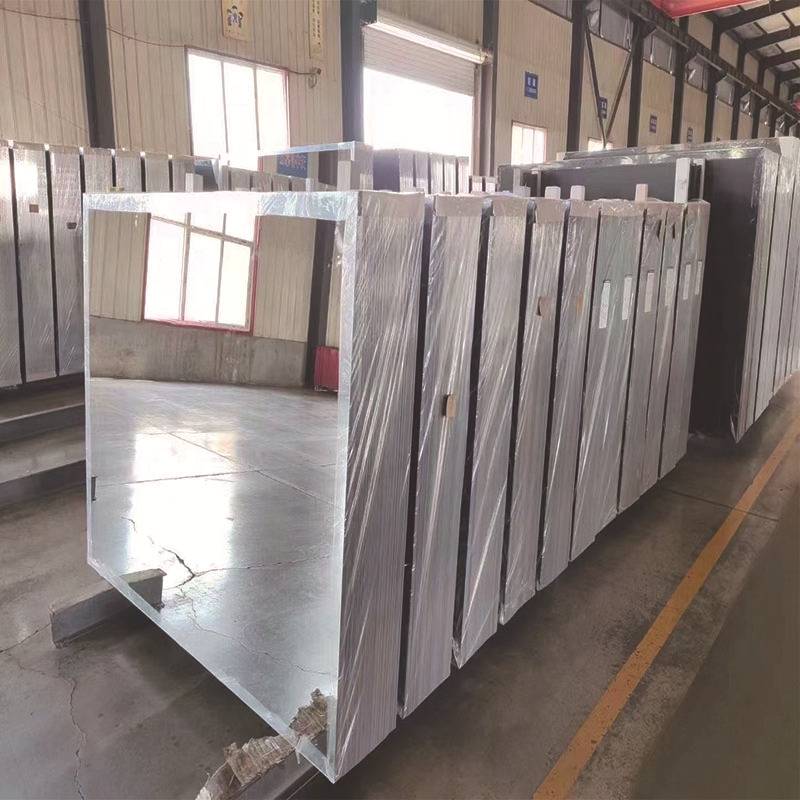The Plate Glass Manufacturing Industry An Overview
The plate glass manufacturing industry is a crucial sector that contributes significantly to the economy and modern architecture. Plate glass, known for its flatness and clarity, is primarily used in windows, doors, skylights, and various architectural applications. This article explores the processes involved in plate glass production, the key players in the industry, and the trends shaping its future.
The Manufacturing Process
The production of plate glass involves several stages, beginning with the raw materials. The primary components include silica sand, soda ash, and limestone. These materials are combined in specific proportions to form a batch that will be melted at high temperatures. The melting process occurs in a furnace, where the mixture is heated to around 1,500 degrees Celsius (approximately 2,732 degrees Fahrenheit). This high-temperature environment ensures that the raw materials fuse together to create molten glass.
Once melted, the glass is refined and homogenized to eliminate bubbles and impurities. The next step is forming the glass into flat sheets. This is usually achieved through two primary processes the float glass process and the casting process. The float glass method, which is the most commonly used today, involves pouring the molten glass onto a pool of molten tin, creating a smooth and uniform surface. In contrast, the casting process involves pouring molten glass into molds to create specific shapes or sizes, which is generally used for thicker glass products.
After forming, the glass sheets undergo annealing in a controlled cooling environment, which helps to relieve internal stresses and ensure durability. Finally, the glass is cut to size, polished, and treated as necessary for its intended use.
Key Players in the Industry
The plate glass manufacturing industry comprises several major companies that dominate the market. Firms like Saint-Gobain, Guardian Glass, and Pilkington are well-known for their high-quality products and innovative technologies. These manufacturers focus on developing energy-efficient and sustainable glass solutions to meet the growing demand from the construction industry.
plate glass manufacturers
Additionally, the rise of small and medium enterprises (SMEs) in various regions has contributed to the diversification of the market. These companies often specialize in niche markets, such as custom-sized glass or specialized coatings, allowing them to compete with larger firms effectively.
Trends and Future Outlook
Several trends are currently shaping the plate glass manufacturing sector. One significant trend is the increasing demand for energy-efficient glass products, driven by global initiatives aimed at reducing energy consumption in buildings. Low-emissivity (Low-E) glass, which reflects heat while allowing light to enter, has gained popularity in both residential and commercial applications.
Environmental sustainability is another critical focus for manufacturers. Companies are investing in recycling technologies to reduce waste and improve resource efficiency. Moreover, the use of eco-friendly raw materials and processes is becoming more prevalent, aligning with global efforts to combat climate change.
Technological advancements also play a significant role in the industry’s evolution. Innovations such as smart glass, which can change its properties based on environmental conditions, are gaining traction. These products not only enhance energy efficiency but also add aesthetic value to architectural designs.
Conclusion
The plate glass manufacturing industry is a dynamic and essential component of modern construction and design. As it continues to evolve, driven by technological advancements and sustainability demands, manufacturers must stay ahead of the curve to meet the changing needs of consumers and the environment. The future of plate glass looks bright, with opportunities for growth and innovation on the horizon.
 Afrikaans
Afrikaans  Albanian
Albanian  Amharic
Amharic  Arabic
Arabic  Armenian
Armenian  Azerbaijani
Azerbaijani  Basque
Basque  Belarusian
Belarusian  Bengali
Bengali  Bosnian
Bosnian  Bulgarian
Bulgarian  Catalan
Catalan  Cebuano
Cebuano  Corsican
Corsican  Croatian
Croatian  Czech
Czech  Danish
Danish  Dutch
Dutch  English
English  Esperanto
Esperanto  Estonian
Estonian  Finnish
Finnish  French
French  Frisian
Frisian  Galician
Galician  Georgian
Georgian  German
German  Greek
Greek  Gujarati
Gujarati  Haitian Creole
Haitian Creole  hausa
hausa  hawaiian
hawaiian  Hebrew
Hebrew  Hindi
Hindi  Miao
Miao  Hungarian
Hungarian  Icelandic
Icelandic  igbo
igbo  Indonesian
Indonesian  irish
irish  Italian
Italian  Japanese
Japanese  Javanese
Javanese  Kannada
Kannada  kazakh
kazakh  Khmer
Khmer  Rwandese
Rwandese  Korean
Korean  Kurdish
Kurdish  Kyrgyz
Kyrgyz  Lao
Lao  Latin
Latin  Latvian
Latvian  Lithuanian
Lithuanian  Luxembourgish
Luxembourgish  Macedonian
Macedonian  Malgashi
Malgashi  Malay
Malay  Malayalam
Malayalam  Maltese
Maltese  Maori
Maori  Marathi
Marathi  Mongolian
Mongolian  Myanmar
Myanmar  Nepali
Nepali  Norwegian
Norwegian  Norwegian
Norwegian  Occitan
Occitan  Pashto
Pashto  Persian
Persian  Polish
Polish  Portuguese
Portuguese  Punjabi
Punjabi  Romanian
Romanian  Russian
Russian  Samoan
Samoan  Scottish Gaelic
Scottish Gaelic  Serbian
Serbian  Sesotho
Sesotho  Shona
Shona  Sindhi
Sindhi  Sinhala
Sinhala  Slovak
Slovak  Slovenian
Slovenian  Somali
Somali  Spanish
Spanish  Sundanese
Sundanese  Swahili
Swahili  Swedish
Swedish  Tagalog
Tagalog  Tajik
Tajik  Tamil
Tamil  Tatar
Tatar  Telugu
Telugu  Thai
Thai  Turkish
Turkish  Turkmen
Turkmen  Ukrainian
Ukrainian  Urdu
Urdu  Uighur
Uighur  Uzbek
Uzbek  Vietnamese
Vietnamese  Welsh
Welsh  Bantu
Bantu  Yiddish
Yiddish  Yoruba
Yoruba  Zulu
Zulu 

